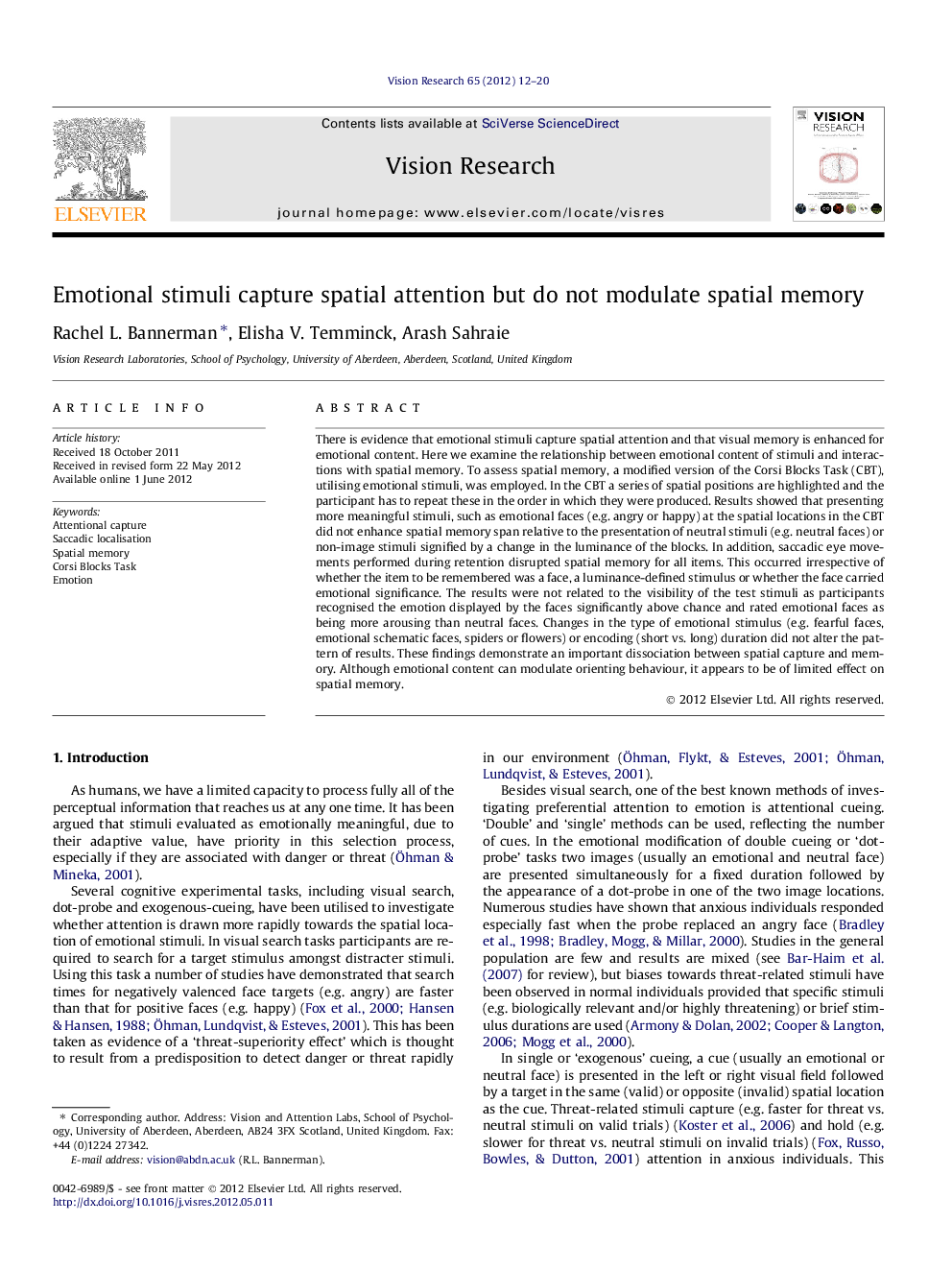| Article ID | Journal | Published Year | Pages | File Type |
|---|---|---|---|---|
| 4033935 | Vision Research | 2012 | 9 Pages |
There is evidence that emotional stimuli capture spatial attention and that visual memory is enhanced for emotional content. Here we examine the relationship between emotional content of stimuli and interactions with spatial memory. To assess spatial memory, a modified version of the Corsi Blocks Task (CBT), utilising emotional stimuli, was employed. In the CBT a series of spatial positions are highlighted and the participant has to repeat these in the order in which they were produced. Results showed that presenting more meaningful stimuli, such as emotional faces (e.g. angry or happy) at the spatial locations in the CBT did not enhance spatial memory span relative to the presentation of neutral stimuli (e.g. neutral faces) or non-image stimuli signified by a change in the luminance of the blocks. In addition, saccadic eye movements performed during retention disrupted spatial memory for all items. This occurred irrespective of whether the item to be remembered was a face, a luminance-defined stimulus or whether the face carried emotional significance. The results were not related to the visibility of the test stimuli as participants recognised the emotion displayed by the faces significantly above chance and rated emotional faces as being more arousing than neutral faces. Changes in the type of emotional stimulus (e.g. fearful faces, emotional schematic faces, spiders or flowers) or encoding (short vs. long) duration did not alter the pattern of results. These findings demonstrate an important dissociation between spatial capture and memory. Although emotional content can modulate orienting behaviour, it appears to be of limited effect on spatial memory.
► Emotional stimuli do not enhance spatial memory span in Corsi Blocks Task. ► Saccadic eye movements disrupt spatial memory. ► ‘Where’ not ‘what’ is important for accurate representations in spatial memory.
